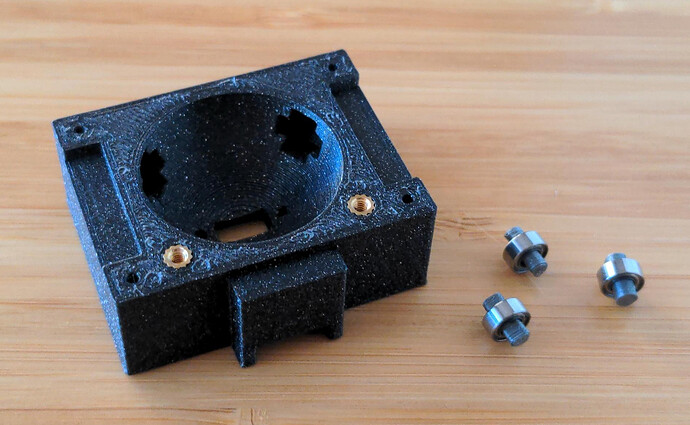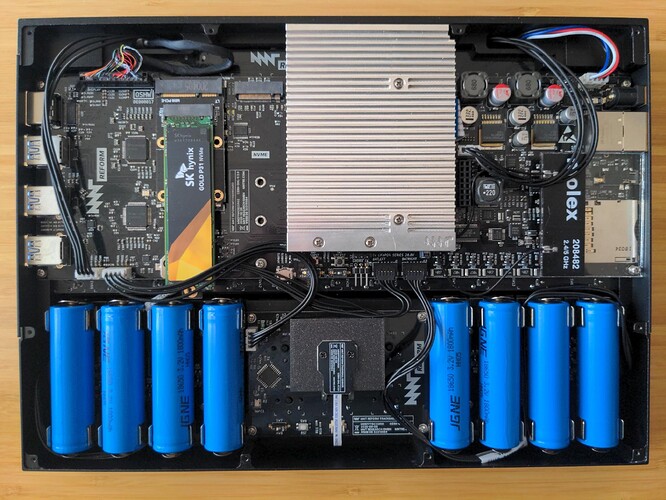After upgrading the CPU, battery board, and side panels in my Reform, I decided to investigate trackball smoothness again. The community previously converged on static ball bearings embedded in the cup: Trackball Replacement Cup with Bearings. The Ploopy open source trackball team uses roller bearings (MR63ZZ) instead of static bearings, so I decided to give that a try.
I had to redesign the trackball mount to accommodate the larger bearings. I started with @Chartreuse’s OpenSCAD model, but this is basically a new project. Only some original measurements and comment fragments survived the transition. The project is here.
Compared to the original cup, it’s a little chunky, but it still fits fine in the Reform. I printed it with the cup facing upward (no supports needed). I used the bearing dowel and bearing press models from the Ploopy project. I printed the dowels vertically.
Is it an improvement? Maybe.
These are my impressions, but there are a lot of variables in play here, so you may have a different experience. When I did the original static bearing modification, I used 2.5mm ceramic ball bearings.
The roller bearings are slightly quieter, and seem to have less stiction (resistance to moving from a standstill), but more friction (the static bearings allow the ball to roll longer if you give it a hard spin). The roller bearings generally feel very smooth, but occasionally I feel a small “catch” in the movement. Some of this may depend on the quality of the bearings. I somewhat randomly chose these (Amazon link). I don’t know if they are high quality, average, or low quality.
If you’re happy with the static bearings, I’m not sure there’s a strong reason to try this, but I do think I slightly prefer the roller bearings. I’m going to try living with them for a while. Here’s an interesting comparison of trackball bearings, including more exotic ball transfer units: Adventures in Ploopy-land
I’m happy to answer any questions about this project if you decide to experiment with it.


